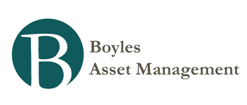The Absolute Return Letter - February 2011: Find the Hat
I suspect there is not one but many hats hidden in the national accounts of China and, thanks to Wikileaks, we now have a very public figure admitting as much. In a leaked 2007 cable Li Keqiang, who is the favourite to become the next premier, confided that official Chinese GDP figures are “man made” and “for reference only” (surprise, surprise), and that one should rather look at alternative measures such as electricity consumption, rail freight volumes and bank lending, if one wants a true picture of economic growth in China.
So let’s do precisely that. In chart 1 below I have plotted Chinese GDP growth against the electricity output over the past 15 years, and an interesting pattern emerges. During periods of low economic growth (the Asian crisis in the late 1990s, the US recession in 2001 and the global credit crisis in 2008-09), GDP grows much faster than the electricity output. Conversely, during periods of strong economic growth (2002-07 and 2010), GDP growth is lower than the power output. Clearly the GDP numbers are massaged.
…..
As I prepared for this letter I received an email from China specialist Simon Hunt, who notified me of the fact that the National Bureau of Statistics of China has just announced that the weight of food in the consumer price index has been reduced as of 1st January. In an emerging economy such as China, where 35-40% of disposable income is spent on food items, sharply rising food prices are actually likely to lead to food accounting for a higher percentage of overall disposable income, so the Chinese reaction defies all logic. There can only be one motive: to cook the books. The CPI numbers appear to be as rigged as the GDP numbers.
…..
Over the past decade, China’s foreign exchange reserves have grown from about $200 billion to a whopping $2.7 trillion (see chart 5), accounting for over 5% of global GDP. In the last century, only two other countries have pursued such a strategy to the effect where their reserves reached 5-6% of global GDP –the United States in the 1920s and Japan in the 1980s. Both ended in tears. Lots of tears!
If the Chinese overextend themselves, and the banking industry ultimately goes bust, one needs to bear in mind that it is always the consumer who ends up bailing out the banking industry in a banking crisis, either directly (through banks defaulting on their liabilities) or indirectly (through increased taxes). In China, however, with the consumer accounting for such a low percentage of GDP (36% today vs. 45% ten years ago), a banking collapse could create a very deep recession, as the consumer is not well positioned to cushion a sinking banking sector.
Now, when the Chinese ultimately bite the bullet and force the economy to slow down meaningfully (and I believe it is a question of when, not if), the biggest victim is likely to be commodity prices, and none more so than base metal prices, which in recent years have been highly correlated to the fortunes of China (see chart 6). Remember - when an economy, which has grown accustomed to expanding by 10% per year for more than a decade, suddenly experiences ‘only’ 5% growth, it will feel like a recession, and its people will react accordingly.
…..
Now, let’s shift gear. As always, there are two sides to the story. And despite my concerns that the current investment boom will end in tears, China presents a hugely attractive long-term investment opportunity, as it grinds its way to becoming the largest economy in the world. China is a growth story unlike anything we have ever seen and anything we are likely to ever seen again. In short, it is the fastest industrial revolution ever experienced. In the 30 years since the economic reforms began, GDP has grown by a factor 10, and GDP per capita is now almost 20% that of the United States whereas, 30 years ago, it was only about 4% the US level.
Put slightly differently, China today is where Japan was in 1950. Would you bet against China continuing on a path similar to that of Japan?
- China’s Cash Pile Provides No Shield - By Edward Chancellor
China sits on the world’s largest foreign exchange reserves. Many people view Beijing’s $3tn cash pile as providing economic insurance for years to come. From this perspective, the fact that China has just produced its first quarterly balance of payments...
- China Set To Continue Supersize Binge - By Edward Chancellor
It is easy to see why Chinese premier Wen Jiabao is calling for a “greater emphasis on growth”. China’s property market is stressed and the country’s main export market, Europe, is contracting. Several economic indicators, including electricity...
- Prem Watsa's 2011 Shareholder Letter - Fairfax Financial
We continue to fully hedge our common stock portfolios as our concerns about the United States discussed in our 2010 Annual Report persist, and have been magnified by the financial crisis in Europe, including the underlying austerity programs, and the...
- Robert Huebscher Interviews Vitaliy Katsenelson
Paul Krugman wrote about China in his New York Times column last Monday. That’s a topic that you have researched closely. He said that "China’s story just sounds too much like the crack-ups we’ve already seen elsewhere," referring to the financial...
- Stratfor: China And The Future Of Rare Earth Elements
Interesting the way China came to produce 95% of the global supply of REE. I don’t think they teach the “government subsidizing loans to money-losing operations to create jobs but collapse the price of the commodity and drive away almost all foreign...

